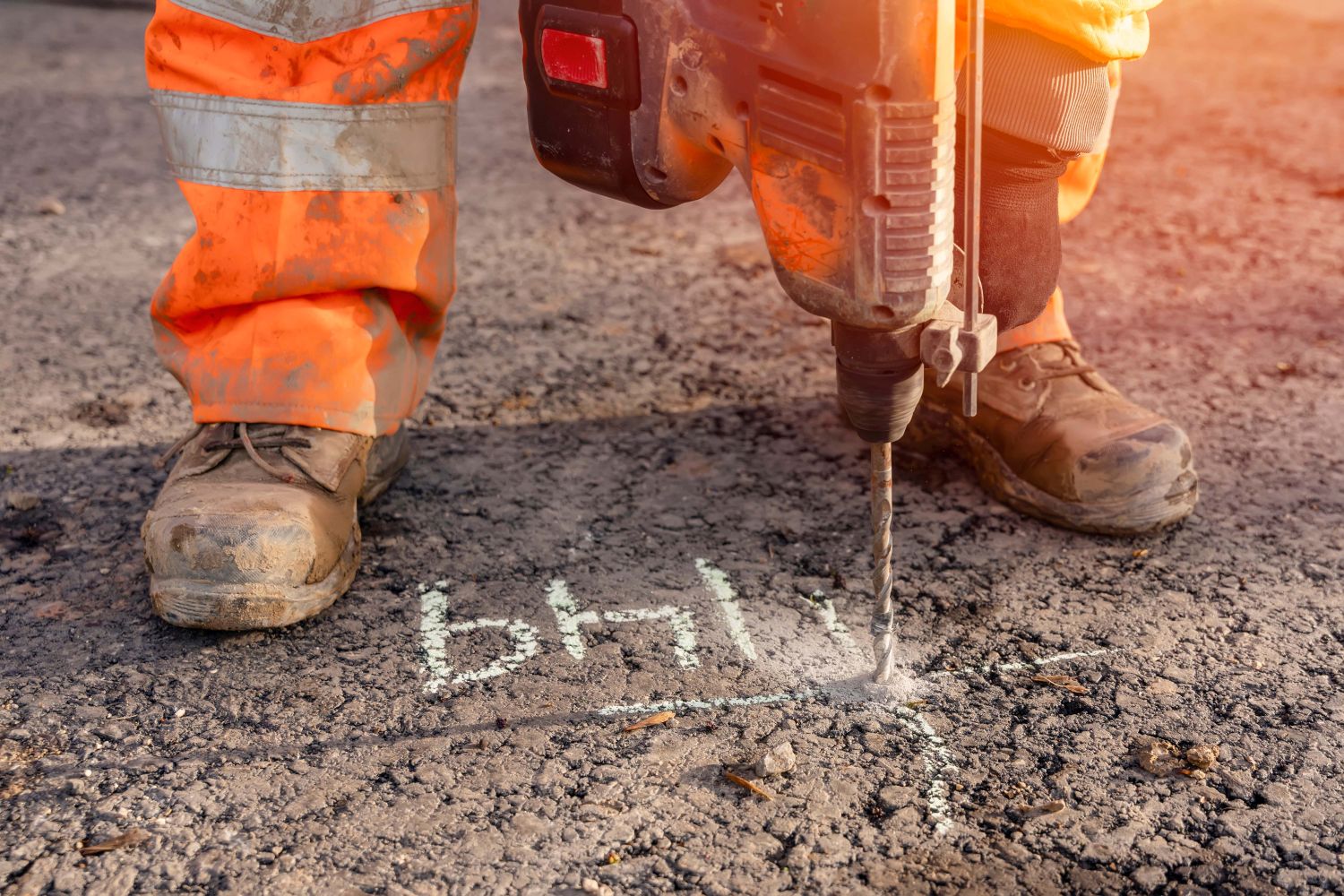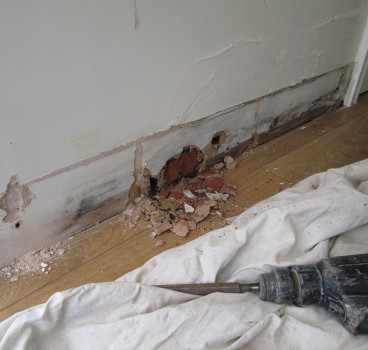Tackling hand-arm vibration syndrome in construction
The construction sector is no stranger to physical risks, but one of the most pervasive and often underestimated occupational hazards, is vibration exposure. The British Safety Industry Federation (BSIF) has recently launched its ‘Bad Vibrations’ campaign, aiming to focus a spotlight on Hand-Arm Vibration Syndrome (HAVS) and equip the industry with practical, accessible guidance. For employers, contractors, and site teams, this is a critical moment to act, to protect workers and to reduce the long-term costs of occupational ill-health, writes John Ridgeway.
Hand-Arm Vibration Syndrome is a serious, disabling condition caused by prolonged use of vibrating tools and machinery. It affects the nerves, blood vessels, muscles and joints of the hand, wrist and arm. Workers suffering from HAVS may experience symptoms ranging from tingling and numbness to loss of grip strength and in severe cases, permanent disability.
Construction is one of the highest-risk industries for HAVS, alongside sectors such as mining, shipbuilding, engineering and forestry. According to BSIF, up to two million workers across all industries are currently at risk, with a significant proportion operating in construction roles where vibrating equipment is used daily.
The consequences of HAVS extend far beyond the individual. For employers, cases of HAVS can result in lost productivity, increased absenteeism, costly compensation claims and damage to reputation. In legal terms, failing to manage vibration risk effectively can lead to enforcement action under the Control of Vibration at Work Regulations 2005, which place strict duties on employers to assess and control exposure.
How Is HAVS caused?
The main cause of HAVS is long-term, repeated exposure to vibration, typically from hand-held power tools, hand-guided equipment, or machinery where the hands are in contact with vibrating surfaces. Common culprits in construction include:
- Kangoes
- Angle grinders
- Hammer drills
- Impact wrenches
- Chainsaws
- Sanders and polishers
When workers operate these tools for extended periods, especially without adequate breaks, training, or protective measures, the vibrations damage the small blood vessels, nerves and muscles in the hands and arms. Cold and wet conditions, common on construction sites, can exacerbate the problem.
One of the biggest challenges with HAVS is that it develops gradually. Workers often dismiss early symptoms as “just part of the job,” only to find them worsening over time. Early detection is vital because, once advanced, HAVS is irreversible.
Key symptoms to look out for include:
- Tingling or numbness in the fingers, particularly after using vibrating tools
- Loss of sensation, making it difficult to feel small objects or work with precision
- Reduced grip strength
- Fingers that go white and painful in cold conditions (vibration white finger)
- Tingling that turns into permanent numbness if exposure continues
For employers, any worker reporting these signs should trigger immediate assessment and intervention.
The scale of the problem in construction
Despite decades of awareness campaigns, HAVS remains one of the most common occupational diseases in the UK construction industry. Recent Health and Safety Executive (HSE) data shows thousands of new and longstanding cases each year. Compensation payouts for severe cases can exceed six figures and prosecutions are on the rise.
BSIF’s decision to launch the ‘Bad Vibrations’ campaign reflects the scale of the problem. By providing a practical guide and promoting a simplified approach to vibration control, the campaign aims to make compliance achievable for every contractor, from tier-one principal contractors to smaller subcontractors.
Under the Control of Vibration at Work Regulations 2005, employers must:
- Assess vibration exposure levels for all workers who use vibrating tools or machinery.
- Take action to reduce exposure, ideally by eliminating vibration risks altogether or substituting tools with lower vibration models.
- Provide information and training to employees on the risks of vibration and safe tool use.
- Arrange regular health surveillance for workers at risk, ensuring early detection of symptoms.
- Record and monitor exposure to ensure it remains below the daily exposure action value (EAV) of 2.5 m/s² A(8) and never exceeds the exposure limit value (ELV) of 5 m/s² A(8).
Failure to comply can result in significant penalties, but more importantly, it places workers’ health in jeopardy.
However, eliminating vibration risk entirely is not always possible in construction, but there are effective measures employers can adopt to reduce exposure:
Choose low-vibration tools
Modern tool manufacturers now produce equipment designed to minimise vibration levels without compromising performance. Specifying low-vibration tools at the procurement stage is one of the simplest ways to cut risk.
Implement rotational working
Avoid assigning workers to prolonged, uninterrupted use of vibrating tools. Instead, rotate tasks among team members and ensure adequate rest breaks.
Maintain tools properly
Worn or poorly maintained tools often vibrate more than well-maintained ones. Regular servicing, replacement of worn parts, and ensuring cutting tools remain sharp can all make a difference.
Train and educate workers
Provide training on correct tool handling, grip techniques and the importance of taking breaks. Workers should understand that tight gripping or pushing harder than necessary increases vibration transmission.
Monitor exposure and health
Use vibration measurement equipment or exposure calculators to track workers’ vibration doses. Health surveillance programmes should be in place for at-risk staff, with occupational health professionals assessing any reported symptoms.
Improve site conditions
Cold, damp working conditions can worsen the effects of vibration. Where possible, provide heated welfare facilities, protective gloves and waterproof PPE.
The BSIF’s new campaign aims to make all of this easier for contractors to implement. Developed in collaboration with tool manufacturers, distributors, test houses and certification bodies, the initiative provides:
- A clear, jargon-free guide to vibration management
- Practical advice on measurement and control
- Recommendations on health surveillance and compliance
- Resources for training and awareness campaigns on site
By bringing together expertise from across the industry, the campaign hopes to reduce the incidence of HAVS, protect workers’ long-term health and help employers avoid costly claims and prosecutions.

The business case for action
While the moral and legal arguments for tackling HAVS are clear, the financial case is equally compelling. HAVS leads to:
- Lost working days due to ill health
- Increased insurance premiums and compensation payouts
- Legal fees and fines from enforcement action
- Damage to company reputation, which can impact future contract bids
By contrast, companies that proactively manage vibration risk benefit from higher productivity, improved worker morale and enhanced reputation as responsible employers. However, while employers have the legal responsibility to control vibration risk, workers also play a vital role in protecting their own health. Practical steps include:
- Reporting symptoms early, no matter how minor
- Using tools as instructed and avoiding unnecessary force
- Keeping hands warm and dry during work
- Participating in health surveillance programmes
- Suggesting improvements if unsafe practices are observed
Looking ahead
The launch of the ‘Bad Vibrations’ campaign marks an important step forward in raising awareness of HAVS in the construction sector, but true progress will only come when vibration risk management becomes an integral part of project planning and day-to-day operations.
Employers should see this not as an additional burden but as an opportunity to protect their workforce, reduce costs and strengthen their compliance credentials in a market where occupational health standards are under increasing scrutiny.
As the industry strives to deliver housing targets, infrastructure projects and innovative modular construction methods, it must also ensure that the workforce behind those achievements can work safely, confidently and without preventable harm.
The message is simple - don’t wait for symptoms to appear or claims to be made. Review your vibration risk today, implement the necessary controls and protect both your workforce and your business for the future.
Additional Blogs

How construction can cut Its carbon footprint by caring for soil
Soil is often dismissed as mere dirt, but it is one of the planet’s most powerful carbon stores, holding more than all of the world’s forests combined. Yet in our rush to build, pave and develop, we...
Read moreWhat is bridging damp? How it happens and how to fix it
Bridging damp happens when moisture finds a path around the building’s damp-proof course (DPC) so it reaches your internal walls and skirting. If you see damp patches rising above the skirting or...
Read more

The silent death of the fixed-price contract
For decades, the fixed-price contract has been the backbone of construction procurement. It promised certainty with a defined scope, an agreed sum and a clear transfer of risk from client to...
Read more